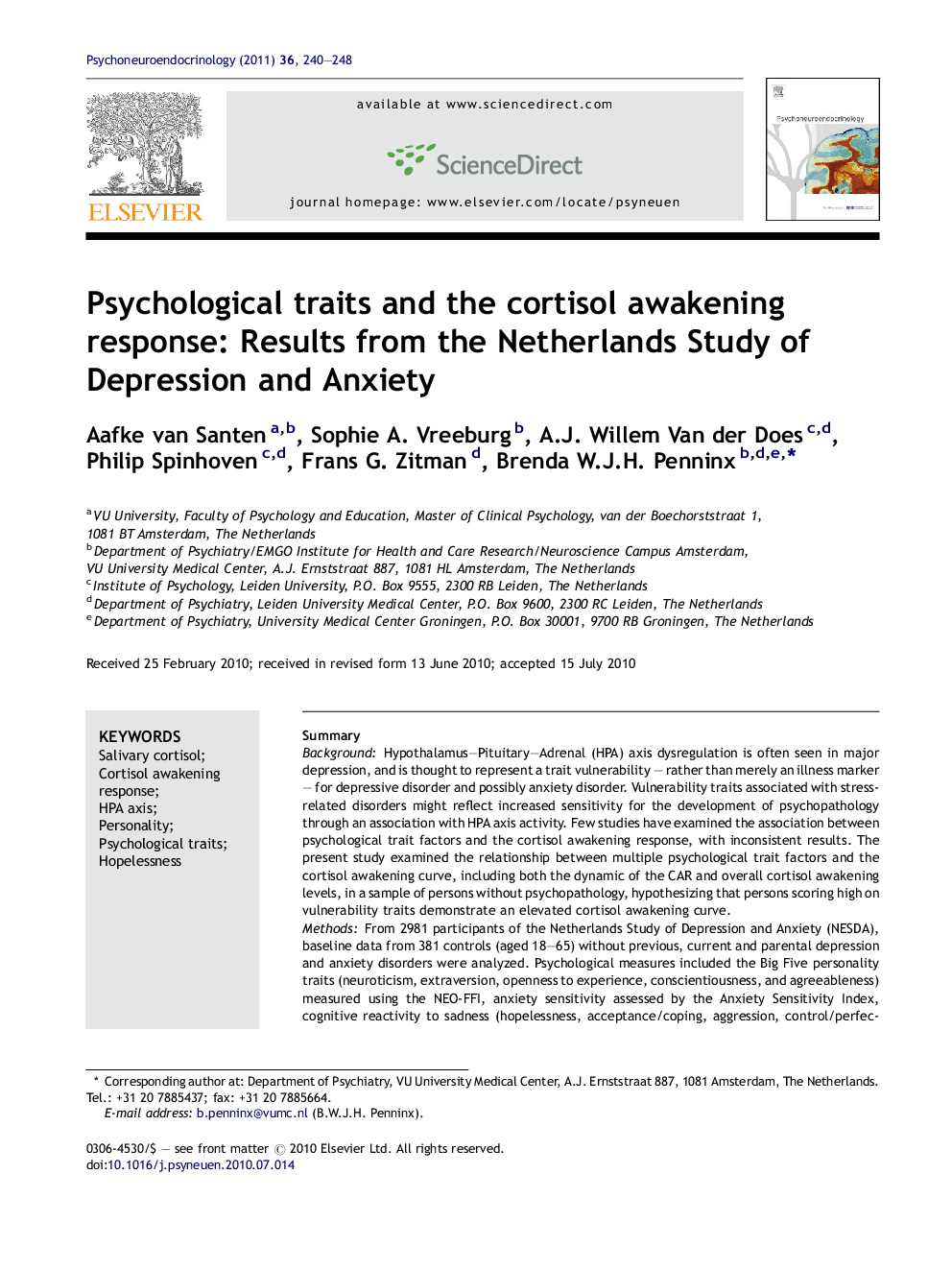| Article ID | Journal | Published Year | Pages | File Type |
|---|---|---|---|---|
| 336514 | Psychoneuroendocrinology | 2011 | 9 Pages |
SummaryBackgroundHypothalamus–Pituitary–Adrenal (HPA) axis dysregulation is often seen in major depression, and is thought to represent a trait vulnerability – rather than merely an illness marker – for depressive disorder and possibly anxiety disorder. Vulnerability traits associated with stress-related disorders might reflect increased sensitivity for the development of psychopathology through an association with HPA axis activity. Few studies have examined the association between psychological trait factors and the cortisol awakening response, with inconsistent results. The present study examined the relationship between multiple psychological trait factors and the cortisol awakening curve, including both the dynamic of the CAR and overall cortisol awakening levels, in a sample of persons without psychopathology, hypothesizing that persons scoring high on vulnerability traits demonstrate an elevated cortisol awakening curve.MethodsFrom 2981 participants of the Netherlands Study of Depression and Anxiety (NESDA), baseline data from 381 controls (aged 18–65) without previous, current and parental depression and anxiety disorders were analyzed. Psychological measures included the Big Five personality traits (neuroticism, extraversion, openness to experience, conscientiousness, and agreeableness) measured using the NEO-FFI, anxiety sensitivity assessed by the Anxiety Sensitivity Index, cognitive reactivity to sadness (hopelessness, acceptance/coping, aggression, control/perfectionism, risk aversion, and rumination) as measured by the LEIDS-R questionnaire, and mastery, assessed using the Pearlin and Schooler Mastery scale. Salivary cortisol levels were measured at awakening, and 30, 45, and 60 min afterwards.ResultsIn adjusted analyses, high scores of hopelessness reactivity (β = .13, p = .02) were consistently associated with a higher cortisol awakening response. In addition, although inconsistent across analyses, persons scoring higher on extraversion, control/perfectionism reactivity, and mastery tended to show a slightly flatter CAR. No significant associations were found for neuroticism, openness to experience, agreeableness, conscientiousness, anxiety sensitivity, and acceptance/coping, aggression, or risk aversion reactivity.ConclusionOf various psychological traits, only hopelessness reactivity, a trait that has been associated with depression and suicidality, is consistently associated with HPA axis dysregulation. Hopelessness reactivity may represent a predisposing vulnerability for the development of a depressive or anxiety disorder, possibly in part mediated by HPA axis activity.
